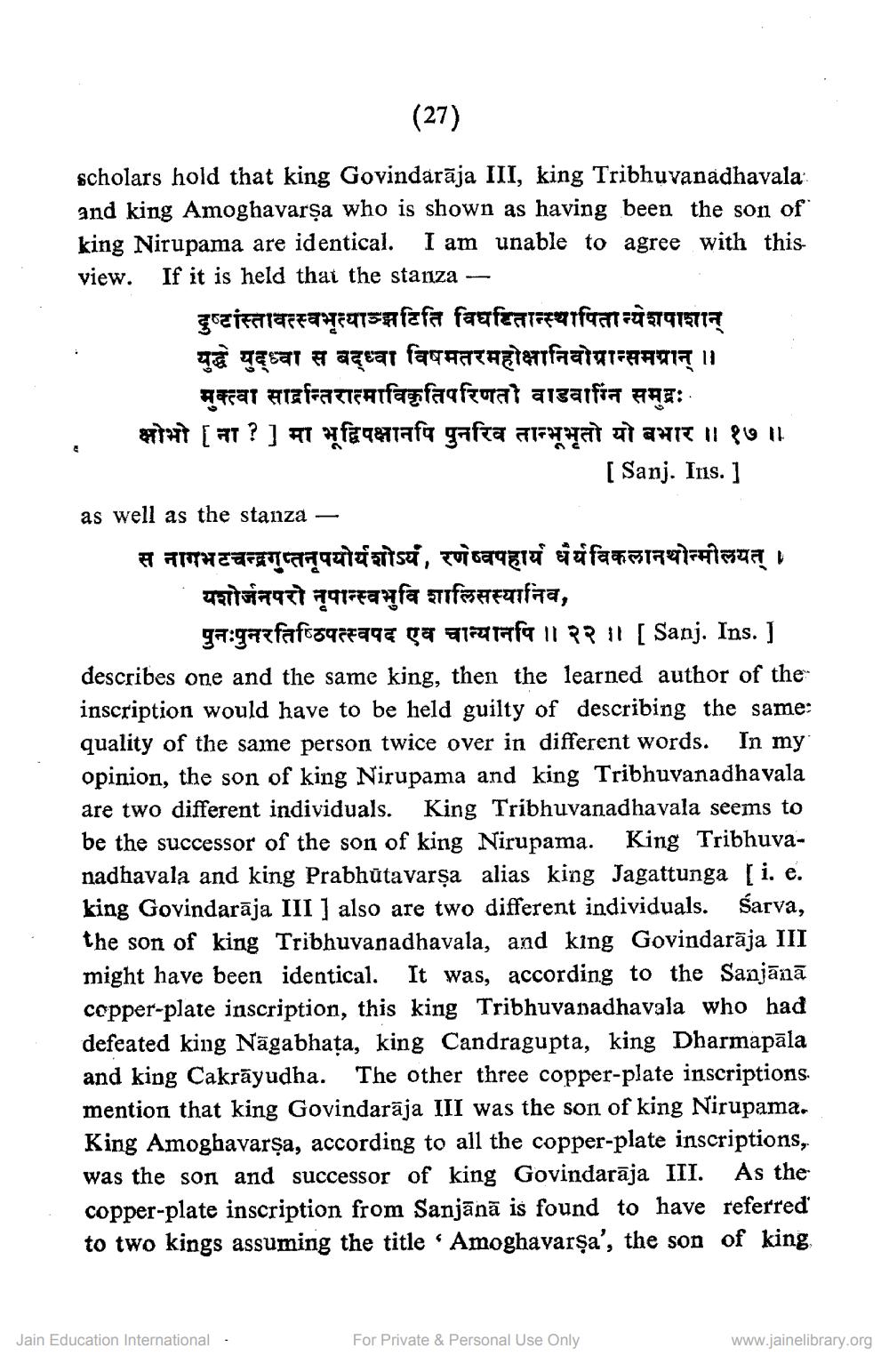________________
(27)
scholars hold that king Govindarāja III, king Tribhuvanadhavala and king Amoghavarşa who is shown as having been the son of king Nirupama are identical. I am unable to agree with thisview. If it is held that the stanza -
दुष्टांस्तावत्स्वभृत्याञ्झटिति विघटितान्स्थापितान्येशपाशान युद्ध युद्ध्वा स बद्ध्वा विषमतरमहोक्षानिवोग्रान्समग्रान् ।
मुक्त्वा सान्तिरात्माविकृतिपरिणतो वाडवाग्नि समद्रः #1*1 [ #1 ? ] 1 #q1afa gafea amuua UI CHIT 11 809 11
[ Sanj. Ins. ] as well as the stanza — स नागभटचन्द्रगुप्तनपयोर्यशोऽयं, रणेष्वपहार्य धर्यविकलानथोन्मीलयत् ।
यशोजनपरो नृपान्स्वभुवि शालिसस्यानिव,
ga:garfafoggia92 ga girarafa 11 ppt [ Sanj. Ins. ] describes one and the same king, then the learned author of the inscription would have to be held guilty of describing the same: quality of the same person twice over in different words. In my opinion, the son of king Nirupama and king Tribhuvanadhavala are two different individuals. King Tribhuvanadhavala seems to be the successor of the son of king Nirupama. King Tribhuvanadhavala and king Prabhutavarşa alias king Jagattunga [i. e. king Govindarāja III ] also are two different individuals. sarva, the son of king Tribhuvanadhavala, and king Govindarāja III might have been identical. It was, according to the Sanjānā copper-plate inscription, this king Tribhuvanadhavala who had defeated king Nāgabhața, king Candragupta, king Dharmapāla and king Cakrāyudha. The other three copper-plate inscriptions mention that king Govindarāja III was the son of king Nirupama. King Amoghavarşa, according to all the copper-plate inscriptions, was the son and successor of king Govindarāja III. As the copper-plate inscription from Sanjānā is found to have referred to two kings assuming the title · Amoghavarşa', the son of king
Jain Education International -
For Private & Personal Use Only
www.jainelibrary.org




